The shipwrecks of La Natiere : a Major French excavation site
Par teddy, dans ENGLISH -# 35 - Fil RSS
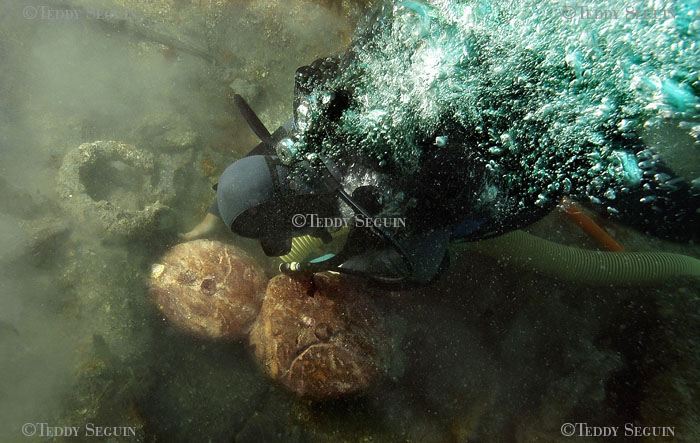
Discovered at the end of 1994 or in the spring of 1995 by spearfishermen, the site of La Natiere was kept secret and some looting occurred for nearly a year until an enquiry by DRASSM, -the Department of Underwater Archaeological Research- led to its discovery being officially declared in September 1995. A pre disturbance survey was carried out in 1996 by Archaeologists from DRASSM and since 1999 the site has been the subject of a vast scientific study, becoming the largest underwater archaeological excavation project in France in the last ten years.
The site of La Natiere, named after the reef where it lies, is located on the eastern side of the main shipping channel into the Port of St Malo, a north Breton town, famous in France for its rich Maritime history, especially the activities of its corsaire ships in the 17th and 18th centuries.
Because of the tides, the depth on site varies between 8 and 18 metres, It is continuously scoured by violent currents, which originate in part from the large tidal range of up to 10 metres, and also because the hydroelectric tidal barrage of the Rance Estuary nearby confuses and accentuates the local current patterns. The rocks of La Natiere are amongst the most dangerous of the shallows and rocky outcrops which ring the entrance to St Malo. They are made even more hazardous by the currents that swirl around them and also by the fact that they frequently lurk just below but rarely break the surface during the year. They are in fact a veritable ship trap. Onesâs characteristic of this site is the remarkable state of preservation of the remains. This is in part a product of the topography of the rocky slope which has protected the wrecks against the effects of the swell, and more recently against the activity of fishing boats. Additionally, the nearby presence of a very active river probably meant that the wrecks were quickly covered and protected by silts.
The Natiere 1 wreck : ÂŦ La Dauphine Âŧ
Excavated from 1999 to 2006, Natiere 1 consists of the starboard side of a ship preserved from the keel just up to a gun deck. Dendro(chronological) dating of the structural remains, indicated that they were constructed after the winter of 1702-03. These structural remains, together with the complexity and the density of finds slowed the progress of the excavation. Additionally, the astonishing characteristics of the oak shipwrightery, and the discovery of a diverse collection of nearly 2000 objects has enabled us to better understand the handling of the ship, its layout and the daily life of the crew, We have found items from the rigging and the galley, pieces of crockery and woodworking tools, personal items and surgeons instruments, guns on carriages or loaded as ballast, sabres and pistols... We have also uncovered navigational instruments, a cross staff and a Davis backstaff, as well as much rarer objects such as an English gunners scale, dated 1648, and initialled IC. The wreck also offered up skeletal remains of a young Macaque which was less than six months old, crushed to death in the galley at the moment of wrecking.
Since 1999 we have also conducted methodical archival research which in conjunction with the archaeological evidence finally identified the wreck as a royal frigate of 300 tonnes, Dauphine (Dolphin). Constructed at Le Havre in 1703, the vessel was then entrusted to private shipowning merchants by King Louis 14, to be fitted out as a privateer. Our study of the shipâs structure has allowed us to create a fairly complete âidentifitâ picture of Dauphine, returning from an Atlantic campaign when she was lost at the entrance to St Malo Harbour on 11th December 1704.
The Natiere 2 Wreck : ÂŦ LâAimable Grenot Âŧ
Lying some 20 metres from Natiere 1 the site Natiere 2 was excavated in 2000, 2001 and then from 2006 to 2008. As with Natiere 1 itâs the starboard side which has survived, from the keel to the second deck. Only the forward third and the extremity of the stern have been properly studied because the centre of the site is occupied by a concreted mass of cast iron ingots, which is difficult to break up. Some of these ingots bear the dates 1746 or 1747, in association with the inscriptions POUTUXENT or Stepn Onion. These inscriptions have led us to two north American iron foundries in the state of Maryland: Patuxent Iron Works on the banks of the Patuxant river, south of Baltimore, and that of iron founder Stephen Onion, established in 1745 to the north of the same town. These two foundries produced ingots for ballasting predominantly English ships, returning to Europe with cargoes of american tobacco. This iron ballast, together with the dendrochonological results as well as the 900 or so objects found to date and the archival research, have allowed us to identify Natiere 2 as the frigate LâAimable Grenot, (The Likeable Grenot) lost on May 6 1749 at the entrance to St Malo. Built in Granville, Nomandy in 1747, this large frigate of 400 tonnes was fitted out as a privateer until 1748, after which she traded with Spain and was en route for Cadiz when she was lost. As with NatiÃĻre 1 the Wreck NatiÃĻre 2 has also delivered a diverse collection of artefacts, although fewer in number than NatiÃĻre 1 because NatiÃĻre 2 was subjected to a systematic salvage after her wrecking. In particular we have recovered items of rigging, items from the galley, especially Norman stoneware, as well as tableware. Amongst the very special items bought to light is an element of the shipâs figure head (part of a feathered tricorn hat).
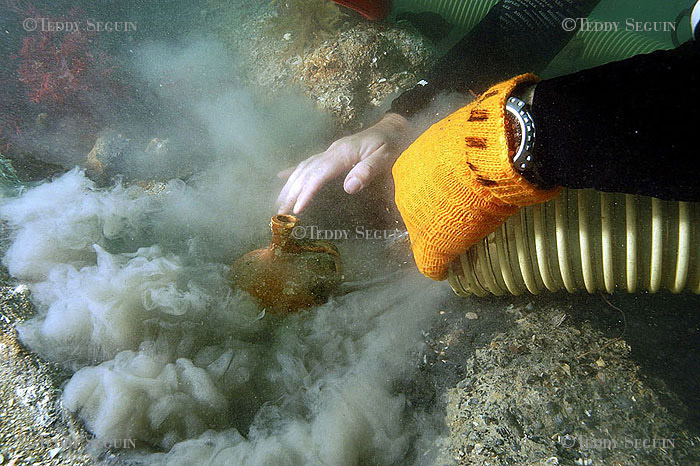
discovery of a ceramic bottle.
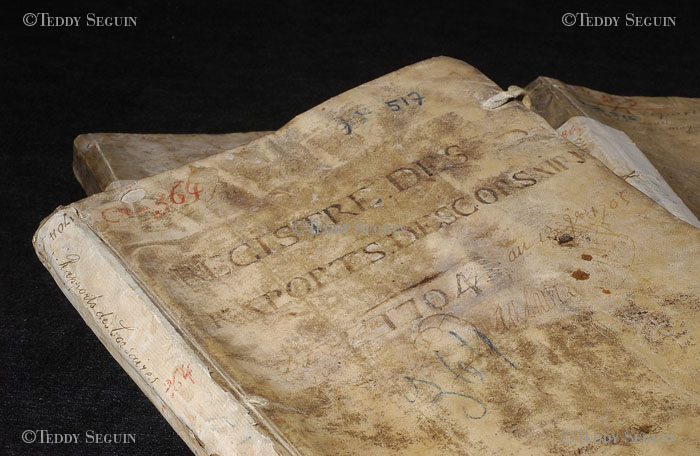
After six years of excavation, the different studies conducted on NatiÃĻre 1 finally created a fairly accurate âvirtualâ picture of the vessel. In association with methodical archival researches, this led us to the identity of the wreck in 2006. It was a royal frigate of three hundred tons, La Dauphine, built in Le Havre in 1703 and then entrusted by King Louis the fourteenth to be armed as a corsair (privateer) by private merchants.
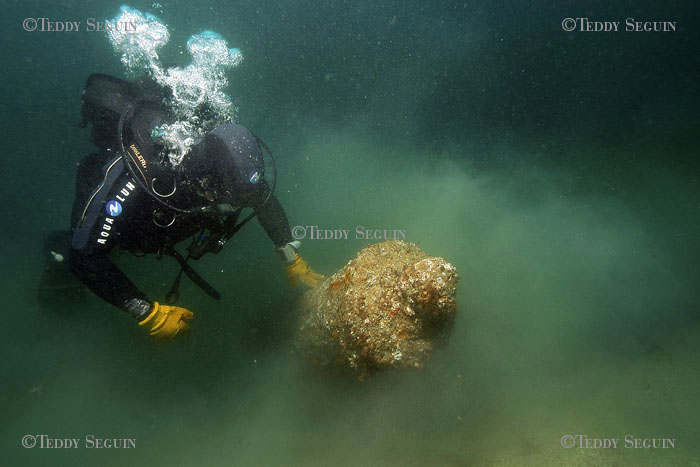
The site is scoured by strong currents caused by the large tidal range of up to 10 meters, and is between eight and eigteen meters in depth. The fact that the flat tops of the reef lur) just below the surface, mean that these rocks can justifiably be called a "ship trap".
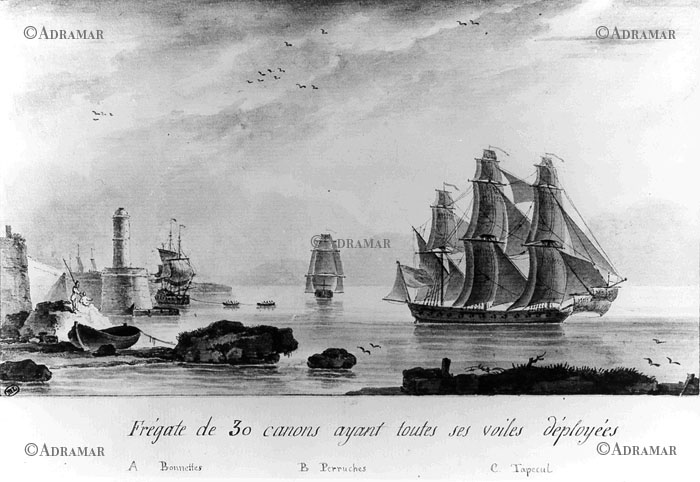
Engraving of frigate like the one of "la NatiÃĻre".
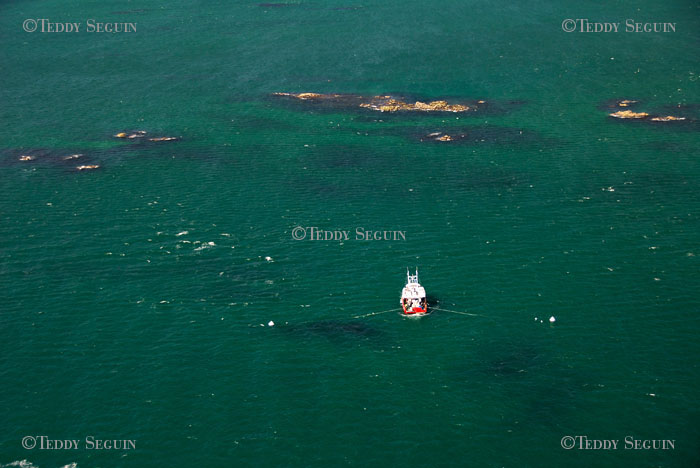
Hermine-Bretagne, the support vessel.
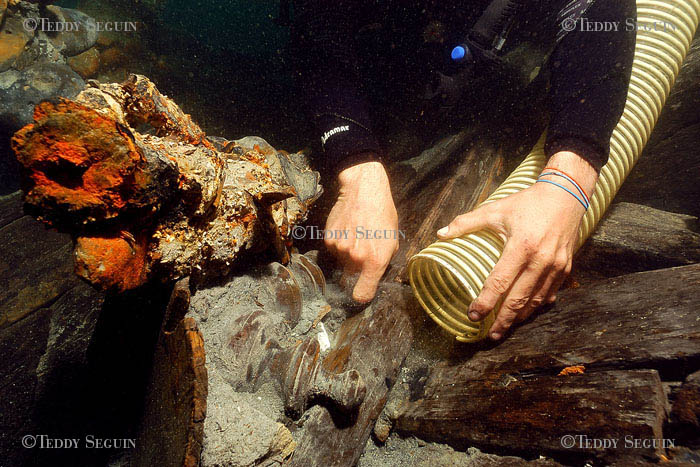
Surveyed in 1996, the remains of the shipwreck NatiÃĻre 2 were mainly studied in 2001, then from 2006 to 2008.
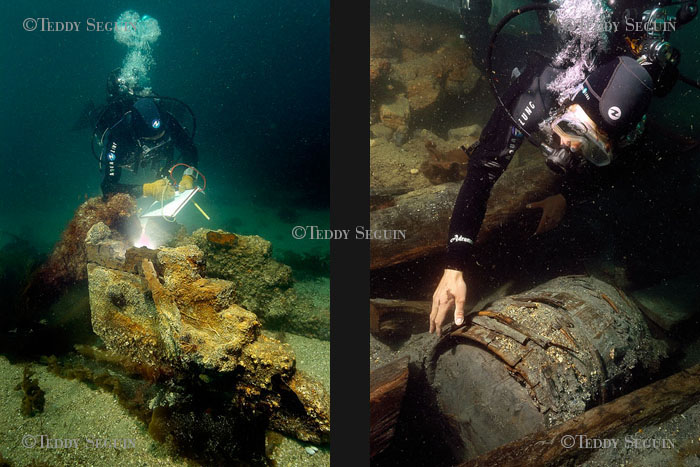
Michel L'Hour, underwater archaeologist and nanager of the DRASSM, (DÃĐpartement des Recherches ArchÃĐologiques Subaquatiques et Sous-Marinese) makes a drawing of La Dauphine cannon before it'll extracted. / discovered of a very well preserved example of one of these barrels.
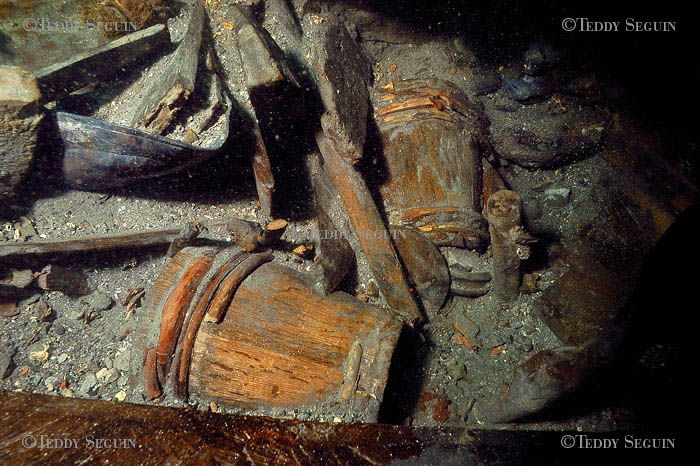
The kitchen area was identified in fore part of the wreck, between the two decks. It is in this area that were found the remains of the oven, bricks and copper sheathings.
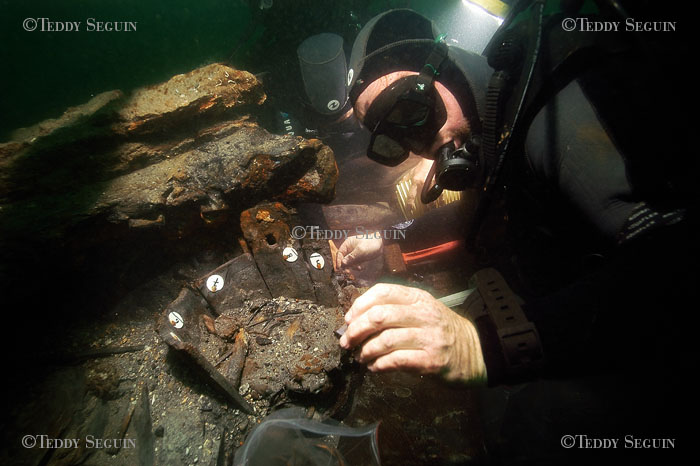
A diverse collection of nearly three thousand objects was recovered and has enabled archeologists to better understand the handling of the ship, its layout and the daily life of the crew.
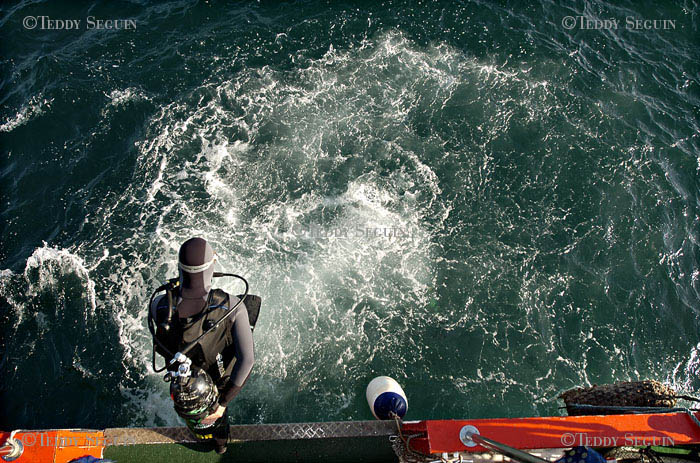
living of the divers from Hermine-Bretagne, the support vessel.
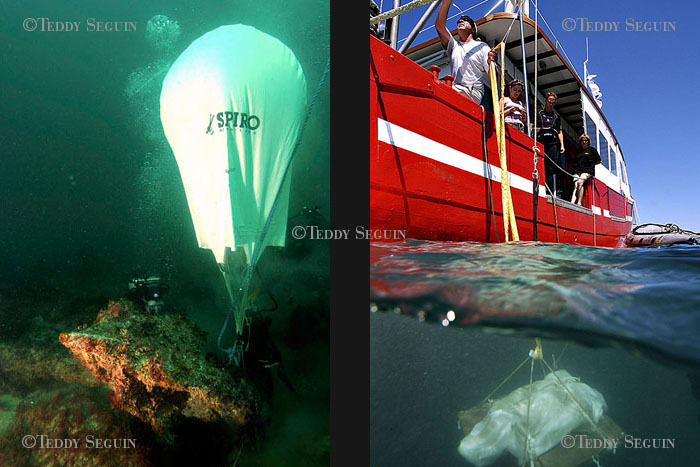
One anchor was bought to the surface in two thousand five.
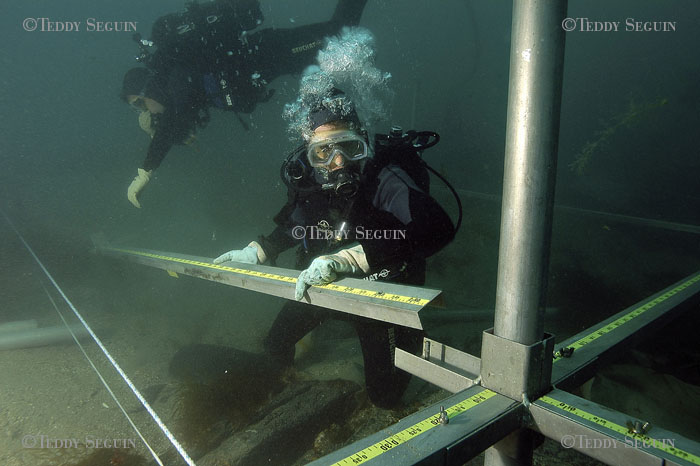
Divers put in the excavation grid. These squares of three meters by three permits to draw precisely the plan of the wreck.
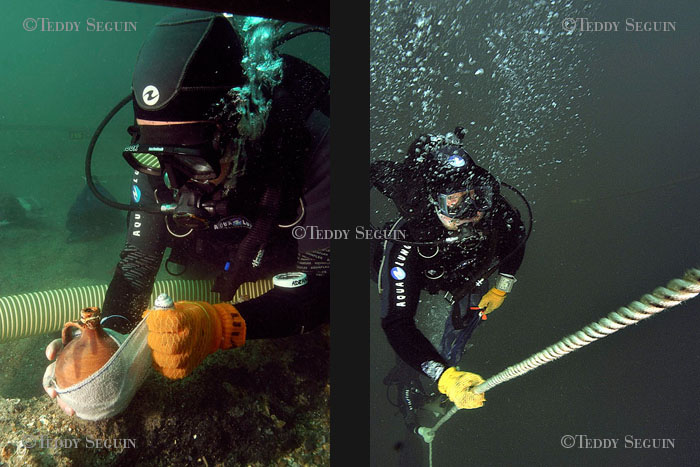
discovery of a ceramic bottle. / Divers rise to the surface.
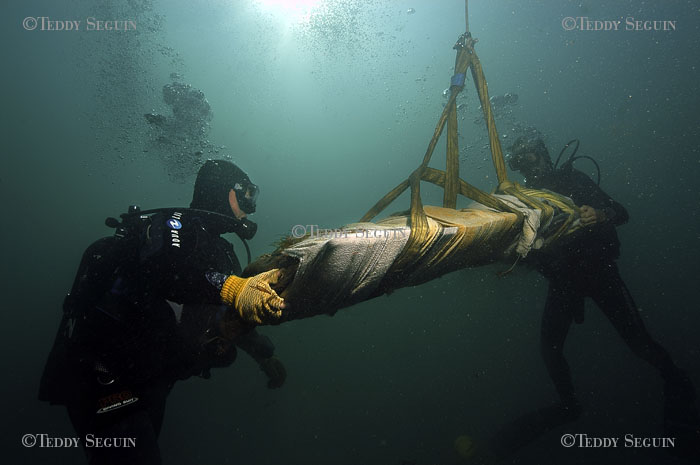
To the guns and pistols must be added three blunderbuses found together. These weapons have barrels made from a copper alloy mounted on wooden stocks.
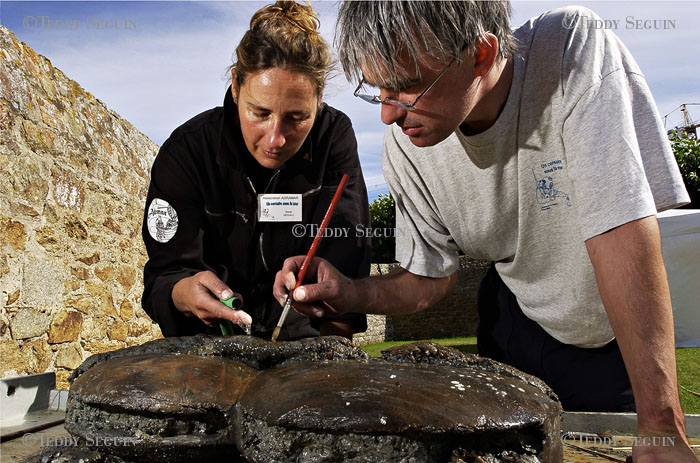
cleaning of violin pulley.
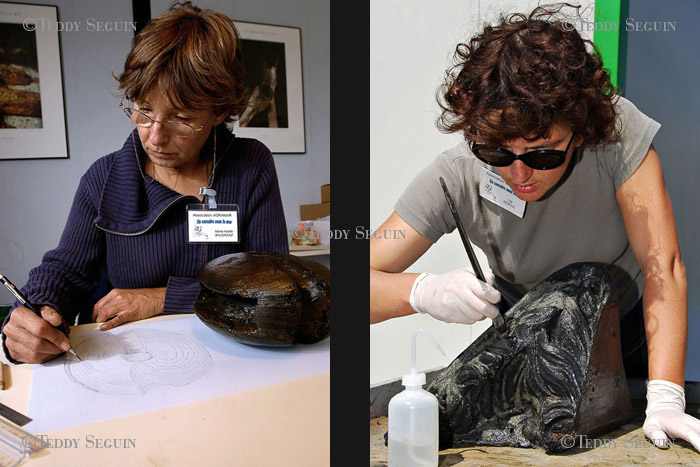
Marie-NoÃŦlle Baudrand draw precisely the most important artefacts. / In 2007 The last excavation data brought another hint to the identification of LâAimable Grenot: The figurehead fragment ! It could in fact be identified as a part of a tricorn from a large figurehead.
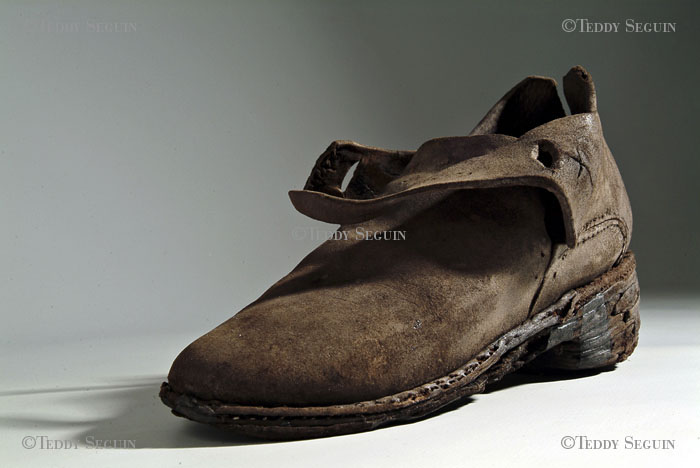
this shoe was perfectly preserved by the sediment who covers the shipwreck.
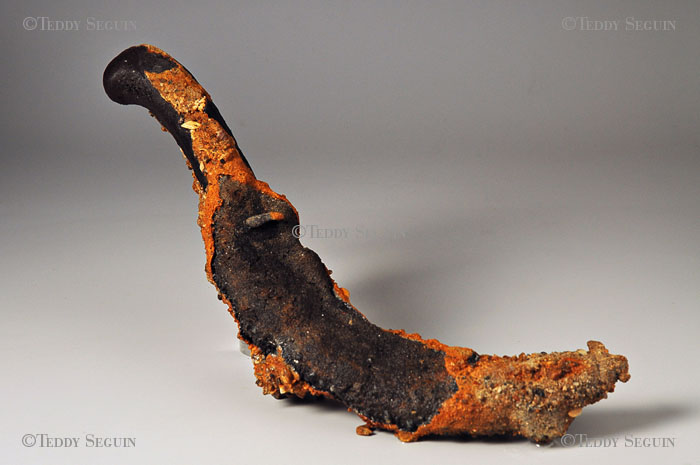
this knife recall us the war past of corsair people.
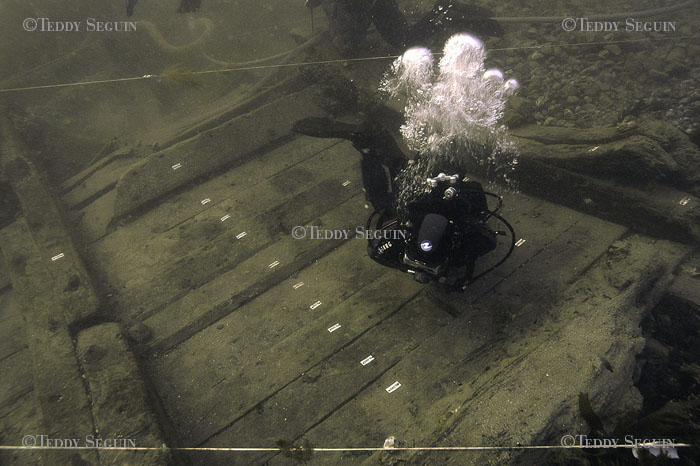
Removing all these stones revealed a splendid shipâs structure, conserved on over 36 meters. The hull is preserved on a maximal width of 9 m, from the keel to the gundeck.
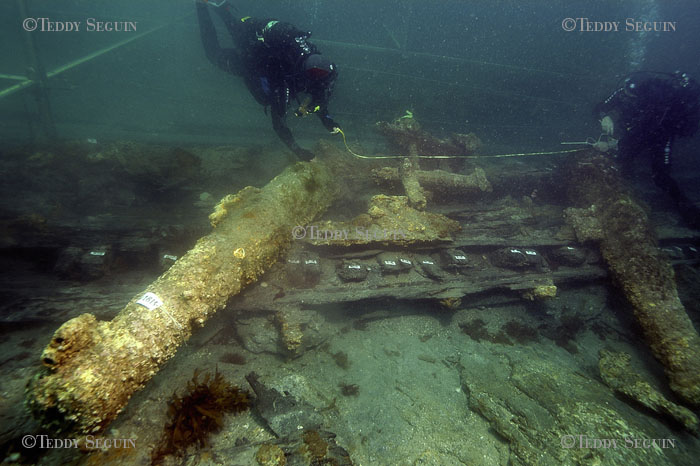
The excavation of the wreck has allowed us to conduct a fairly exhaustive study of the guns forming the armament of the wreck of NatiÃĻre 1. Thirty eight cast-iron guns were found on the wreck. Nine of these were stored in the hold and they appear to have only been used as ballast.
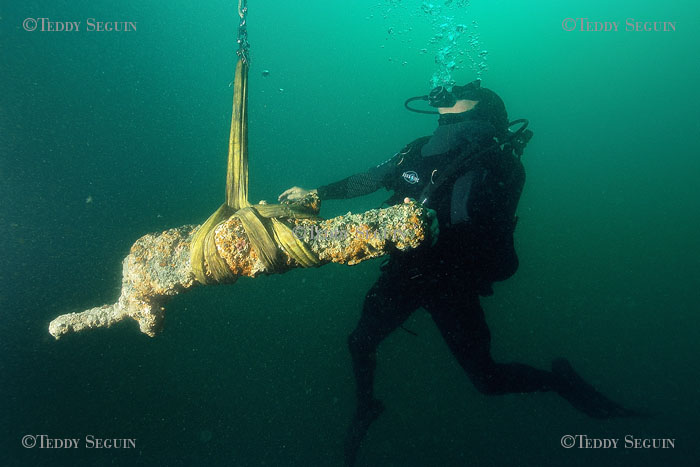
Nine of the nineteen artillery pieces on the southern flank of the wreck were bought to the surface in two thousand five and their concretion is being removed electrochemically) to allow us to determine their dimensions. Above all, it has revealed markings and numbers.
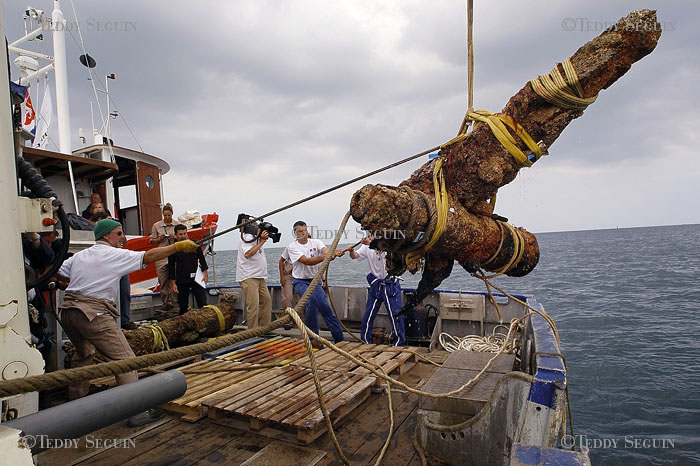
Nine of the nineteen artillery pieces on the southern flank of the wreck were bought to the surface in two thousand five and their concretion is being removed electrochemically) to allow us to determine their dimensions. Above all, it has revealed markings and numbers.
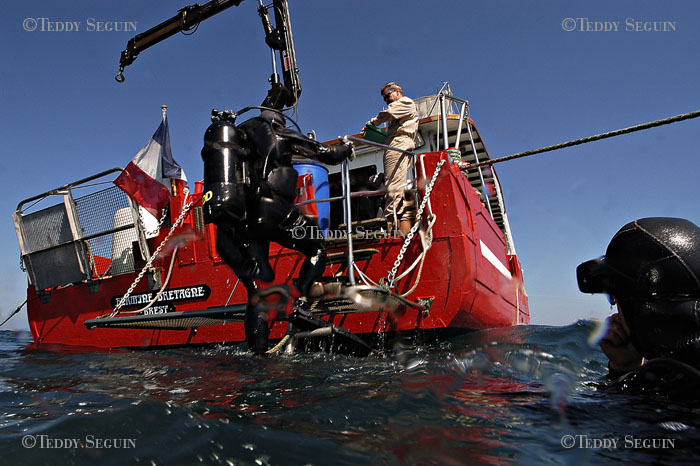
gone out of the divers
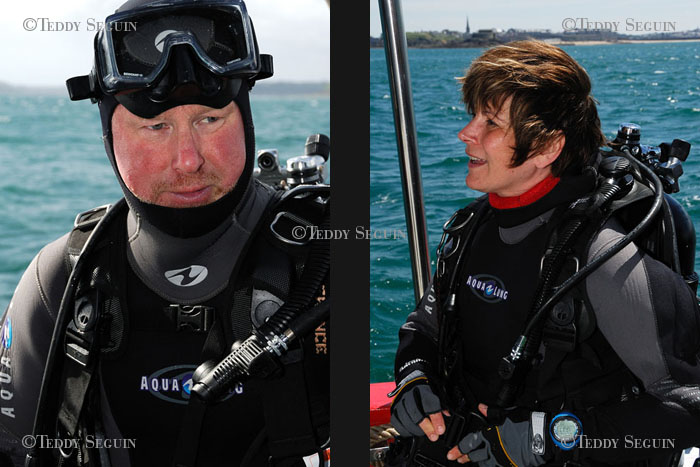
Michel L'Hour, archÃĐologist and diver. He is also the manager of the DRASSM (DÃĐpartement des Recherches ArchÃĐologiques Subaquatiques et Sous-Marinese) and responsable of this excavations. / Elisabeth Veyrat, archÃĐologist and diver. She is also responsable of this excavations with Michel LâHour.
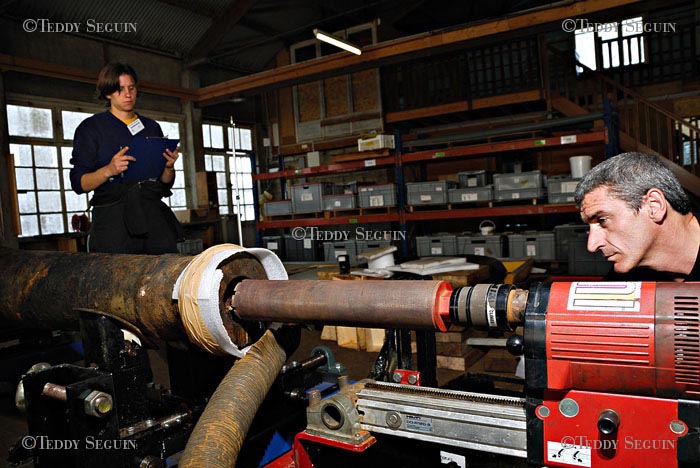
Canons was bought to the surface in 2005. theses canons was protected using electrolysis.
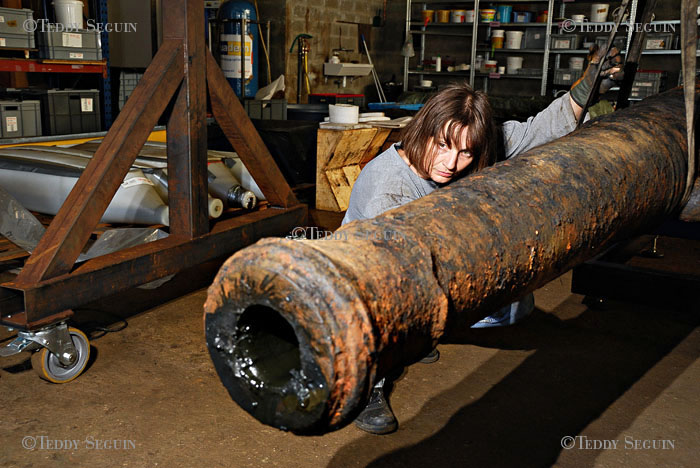
Canons was bought to the surface in 2005. theses canons was protected using electrolysis.
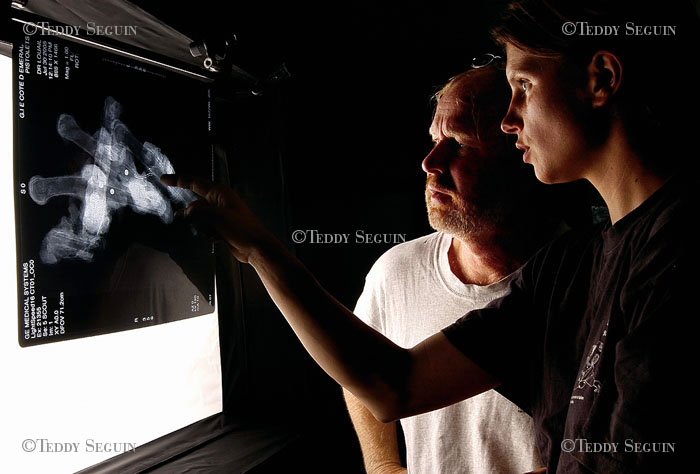
At the stern of the ship, it was discovered numerous guns in metallic concretions.
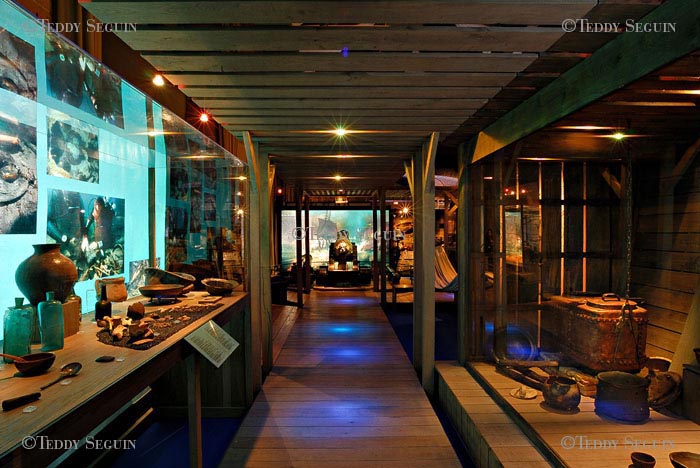
The vast collection of artefacts recovered from the shipwrecks is now on display in many archaeological exhibitions. The excavation project of La Natiere has helped raising the interest of the general public as well as making aware the local authorities about the importance of underwater cultural heritage and its protection.
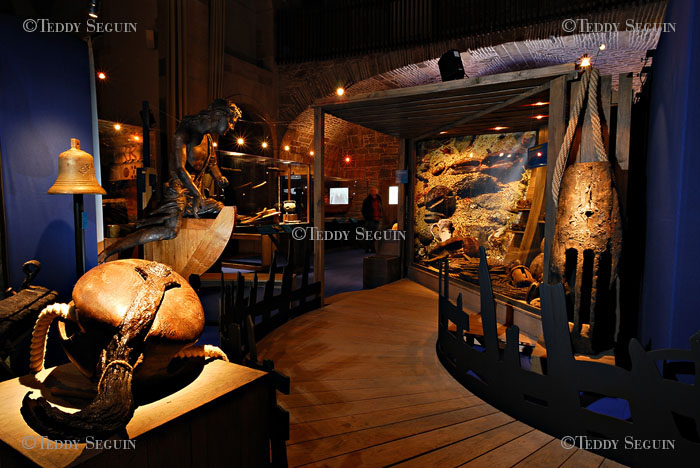
The vast collection of artefacts recovered from the shipwrecks is now on display in many archaeological exhibitions. The excavation project of La Natiere has helped raising the interest of the general public as well as making aware the local authorities about the importance of underwater cultural heritage and its protection.
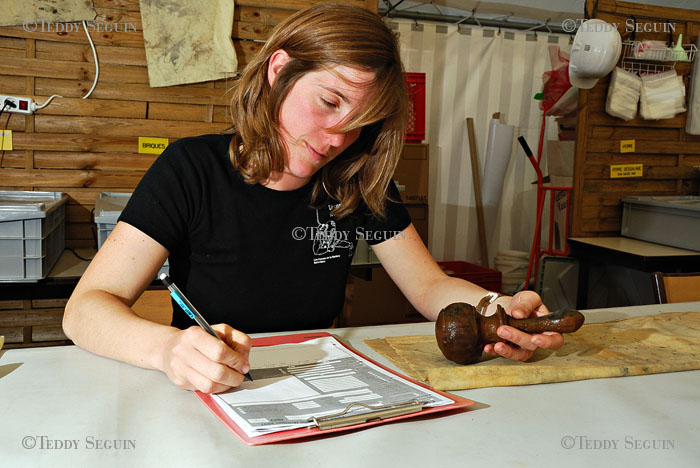
More than 3000 artefacts was bought to the surface since ten years.
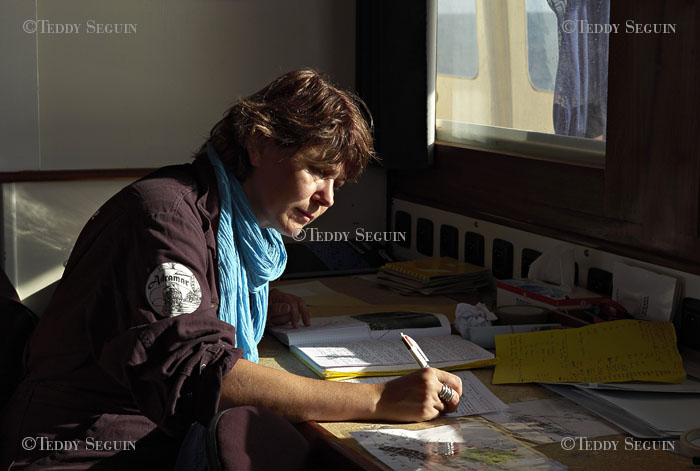
On bord Hermine-Bretagne, Elisabeth Veyrat is making briefing before dive.
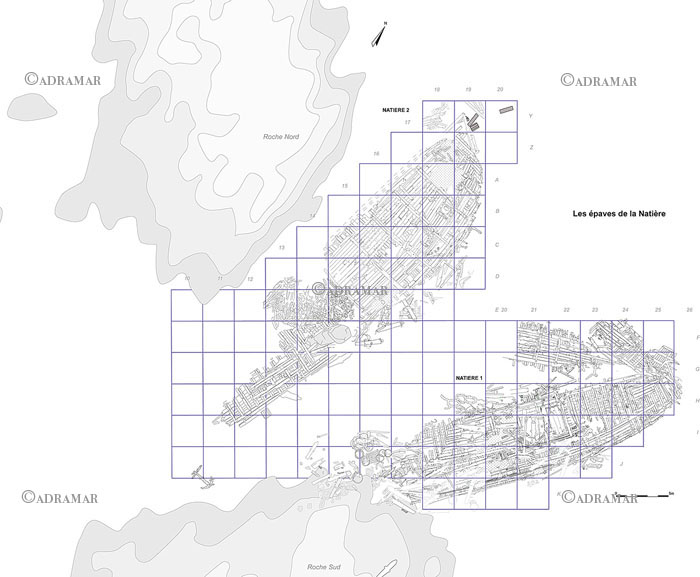
The site of la NatiÃĻre represente two shipwrecks aligned coast to coast between the rocks.

Commentaires
Aucun commentaire pour le moment.
Ajouter un commentaire
Les commentaires pour ce billet sont fermés.